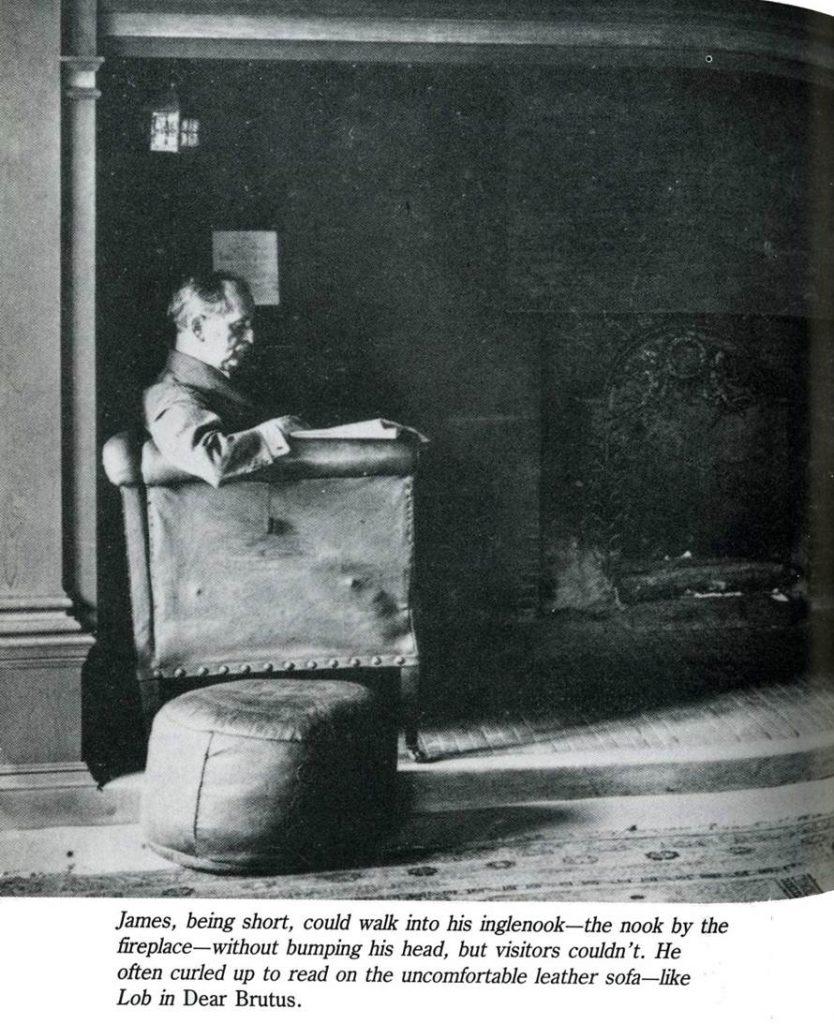Inglenook. What does this odd-sounding word mean?
Inglenook is a nook, the isolated recess, like in the phrase ”to search every nook and cranny.” But it’s not any sort of nook, but one that is located near a fireplace, or can even be seen as part of the older fireplaces.
The Cambridge Dictionary defines it as ”a partly closed space by a large open fireplace built so that you can sit close to the fire” and the Oxford Dictionary matches this definition with its own ” a space at either side of a large fireplace where you can sit ”. Across the pond, The Merriam-Websters adds the detail that inglenook could refer also to ”a bench or settle occupying this nook.”
The first use of the word occurred in 1772
And why have I never heard it?
Well, the noun might be old and closely related to traditional-style fireplaces. So, unless you have ”heritage building with exposed beams, inglenook fireplaces in several rooms, flagstone floors on the ground floor and wide ancient floorboards above,” you may have never seen one.
However, the word, while archaic, is far from being extinct, as proven by the COCA (the American linguistic corpus), that identifies thousands of contemporary uses of the word. Just type inglenook HERE and see for yourself. Most uses come from realtor’s pages, or texts about good ole England cottages.
OK, I got the -nook part, but what about the ingle- part?
Alex Polstigers on Glossologics thinks that ingle comes from the Gaelic aingeal, where it meant just light, and by extension, also fire (in Scotland) or glowing coal (in Irleand). But others trace back the Gaelic etymon aingeal to a Latin word, angelus, that gave angel in English.. Some dispute this, like J. Wallfield, who points to a possible connection with a Slovene word qglje meaning coal or glowing coal (PDF article downloadable from here).
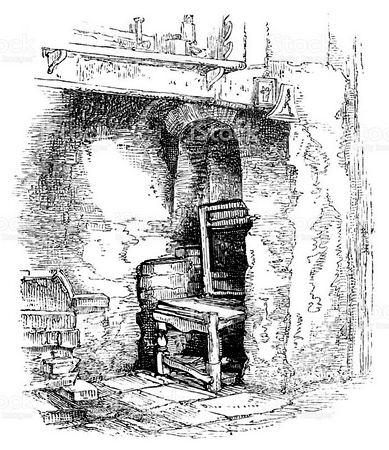
Why would fireplaces need an inglenook?
An online History of Hearth and Home, describes the inglenook as having been an evolution of the medieval open fireplace (yes, one that had no walls and no chimney flue) into a genuine ”little room inside a big room” whose ample hood was meant initially to allow logs to dry.
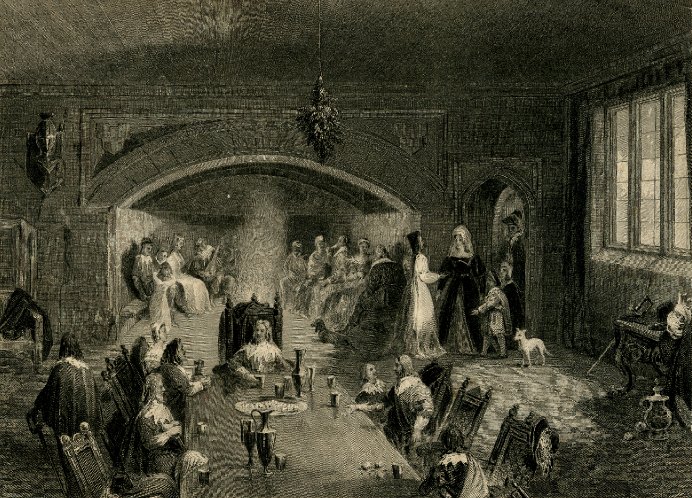
Then, as people became more affluent, the inglenook turned into a decorative piece, complete with pillars and panelled cabinetry, meant to symbolize warmth, security and intimacy
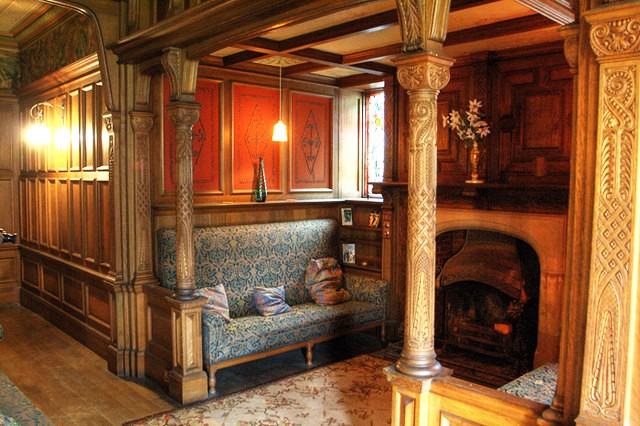
And how did you come across this bizarre word?
In a J.M. Barrie biography, we came across this photograph:
As a side note, Barrie’s being short (some even speak of nanism, possibly psychosomatic) was well known fact, and while a representation like this …
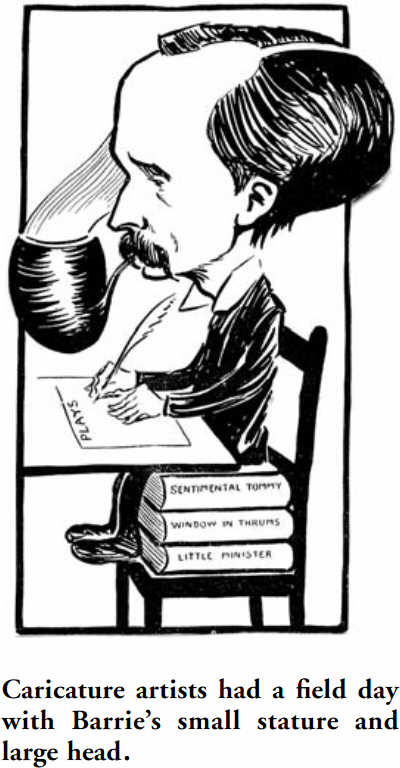
… is an obvious exaggeration by a caricature artist…
…then photographs tell a similar story, like this one where the presence of that large dog further dwarfs Barrie.
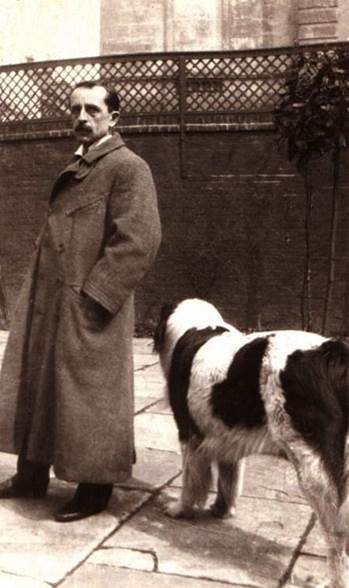
So what would an inglenook have to do with children then?
In larger houses, like mannors or castles, inglenooks could be considerably larger, and adults could fit in easily, and find a good place to do some work, like in this engraving:
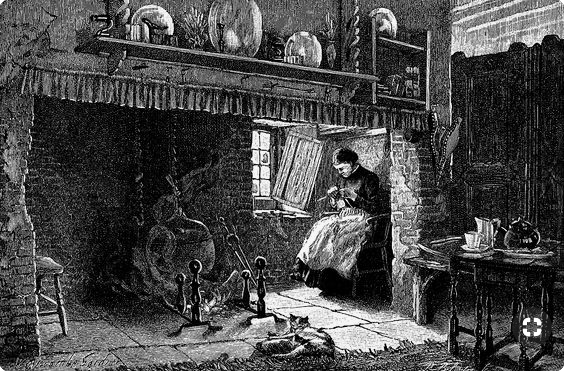
But in most Victorian- and Edwardian-era houses, inglenooks remained the exclusive province of children.
So, while it was only due to his diminutive size that Jamie Barrie could fit in an inglenook, children could hide in such a cozy place quite snugly. And this is documented by dozens of Victorian era pictures and photographs.
And what do inglenooks and storybooks have in common?
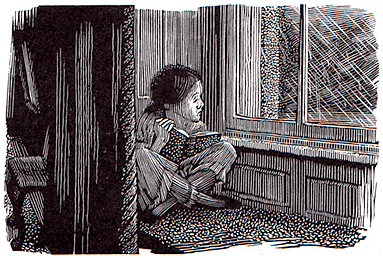
You remember the place where young Jane Eyre would hide when she wanted to have some time to herself and read a book?
It was the casement, the inner space on a window sill, hidden behind the curtain. Those thick Victorian walls, some more than 1 m across, could provide window-frames a large inner ledge that was often used as a bench. A perfectly snug place to read a book.
Inglenooks offered just that, plus the warmth of the fireplace.
So, in other words, anyone turning to a book would need a nook or an inglenook?
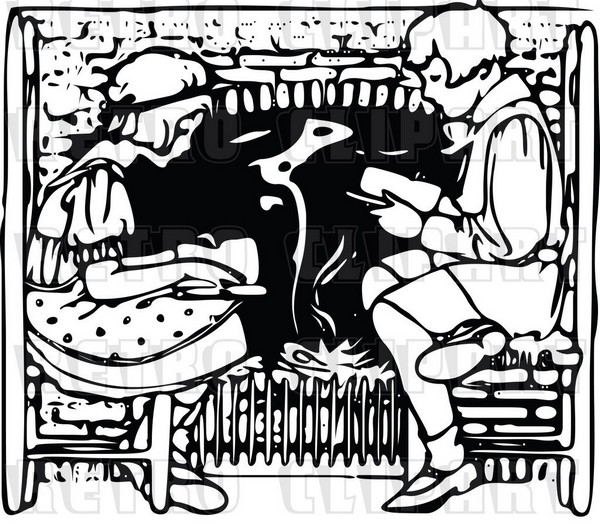
Right. So many people complain: ”I would read a book, if only I had more time!”
But what people need is more time to themselves. More time off the grid, off-line.
How to get that kind of time?
Well, log off and get yourself a nook, away from the electronic noise.
An inglenook?
Yes, that’s what our magazine will try to be: a cozy inglenook, warm in winter, cool in the summer.
A place to read about books — not just children’s books, but also the kind of young adult books that everybody seems to be reading these days — but also about book-inspired books. And, since many of the Inglenook Storybook people have discovered they have a gift for creative writing, this will also be a place to sample some original fiction. Enjoy!
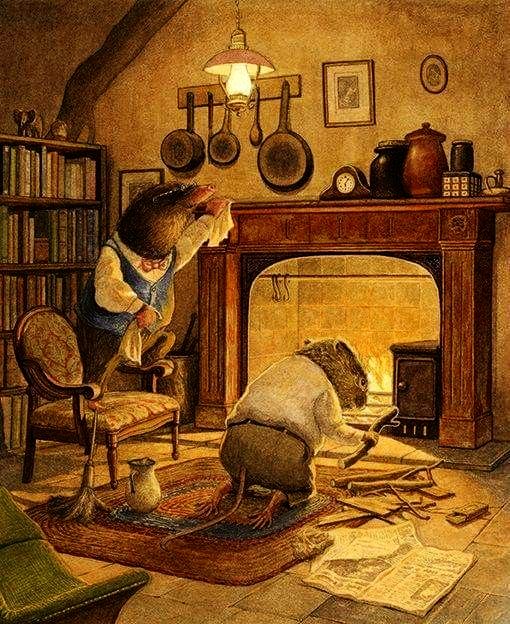

The Inglenook Pooka interviewed by the Notso Good Fairy.

